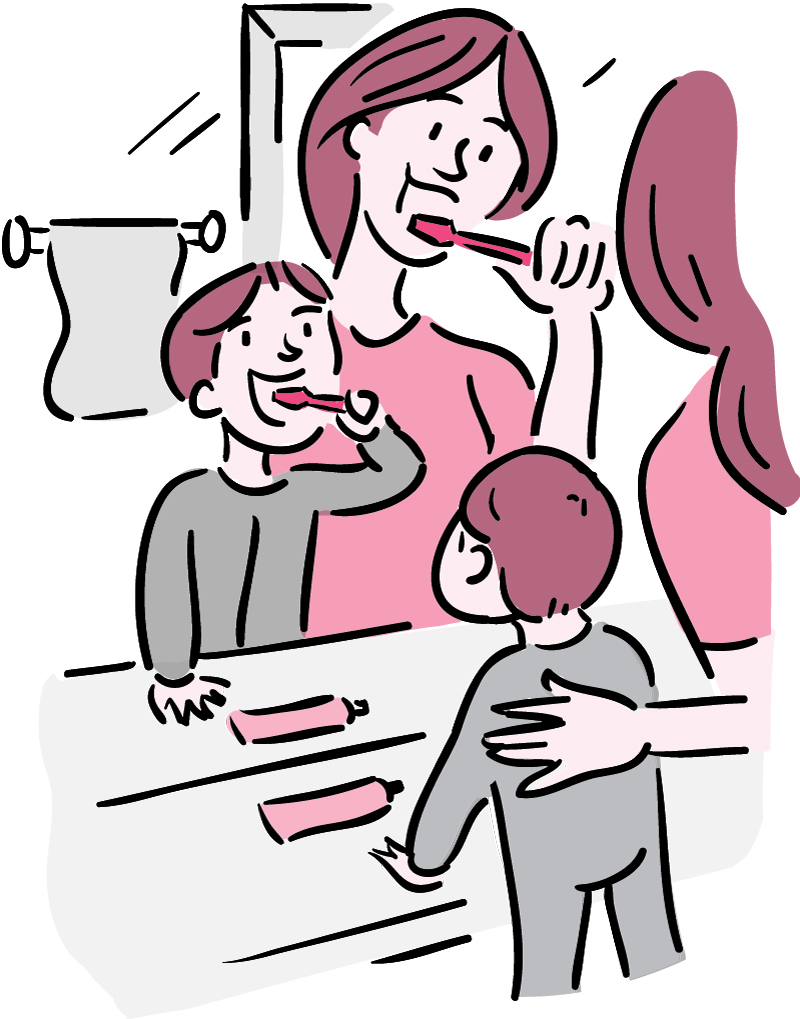Chew on This
Healthy Teeth for Baby and Beyond

Teeth help us bite, chew, speak clearly and smile. Even babies need healthy teeth. But teeth need proper care to stay healthy and strong. It’s never too early to start kids on the path to good dental health.
Diet plays a role in tooth decay. When you eat or drink foods that contain sugar, germs in your mouth use the sugar to make acids. Over time, the acids can cause tooth decay, or Small holes in teeth caused by decay. cavities. Tooth decay is the most common chronic disease in children, yet it’s mostly preventable.
Although baby teeth eventually fall out, it’s still important to take care of them. They play an important role in the mouth. “Baby teeth of course are used to chew, but they also guide growth of the jaw bones and create room for permanent teeth to come in,” says Dr. Tim Iafolla, a dental health expert at NIH.
“Start cleaning your baby’s mouth even before the first teeth come in, so your baby gets used to having his or her mouth cleaned. Wipe gums with a clean, soft cloth,” says Iafolla. “When teeth come in, clean them twice a day with a cloth or soft brush, as they are immediately susceptible to tooth decay and Sticky, colorless film that can lead to tooth decay and gum disease. plaque.”
One important way to protect baby teeth is not putting your baby to bed with a bottle. Milk, formula and juice all contain sugar. If sugary liquids stay on your baby’s teeth too long, it can lead to tooth decay. If you give your baby a bottle to keep at bedtime or to carry around between feedings, fill it only with water.
“It’s important to catch tooth decay early,” Iafolla says. He recommends bringing your child to the dentist by age 1. The dentist can tell if teeth are coming in properly, detect early signs of decay, and give you tips on caring for your child’s teeth.
The best defense against tooth decay is fluoride, a mineral found in most tap water. If your water doesn’t have fluoride, ask a dentist about fluoride drops, gel or varnish.
Start using fluoride toothpaste at about age 2. Iafolla recommends using just a pea-sized drop of fluoridated toothpaste until kids have the ability to spit and rinse.
Young kids need help brushing their teeth properly. Try brushing their teeth first and letting them finish. You might try using a timer or a favorite song so your child learns to brush for 2 minutes. Continue to supervise brushing until your child is 7 or 8 years old.
Have kids brush their teeth at least twice daily: in the morning, at bedtime, and preferably after meals.
Offer healthy foods and snacks to children. If kids do eat sugary or sticky foods, they should brush their teeth afterward.
Also ask your child’s dentist about sealants—a simple, pain-free way to prevent tooth decay. These thin plastic coatings are painted on the chewing surfaces of permanent back teeth. They quickly harden to form a protective shield against germs and food. If a small cavity is accidentally covered by a sealant, the decay won’t spread because germs trapped inside are sealed off from their food supply.
By following these tips, you can help your children develop healthy dental habits for life.
NIH Office of Communications and Public Liaison
Health and Science Publications Branch
Building 31, Room 5B52
Bethesda, MD 20892-2094
Contact Us:
nihnewsinhealth@od.nih.gov
Phone: 301-451-8224
Share Our Materials: Reprint our articles and illustrations in your own publication. Our material is not copyrighted. Please acknowledge NIH News in Health as the source and send us a copy.
For more consumer health news and information, visit health.nih.gov.
For wellness toolkits, visit www.nih.gov/wellnesstoolkits.




